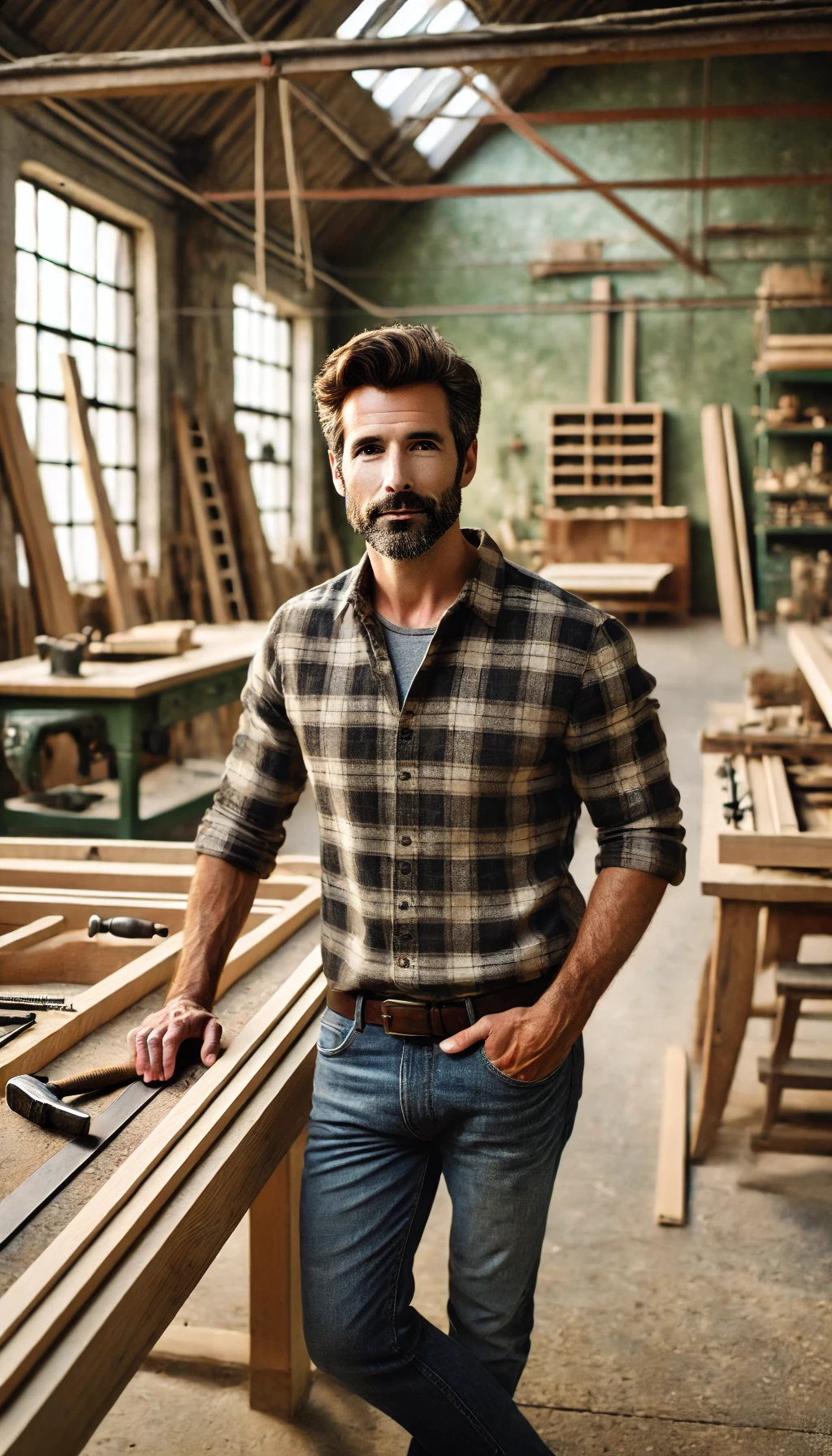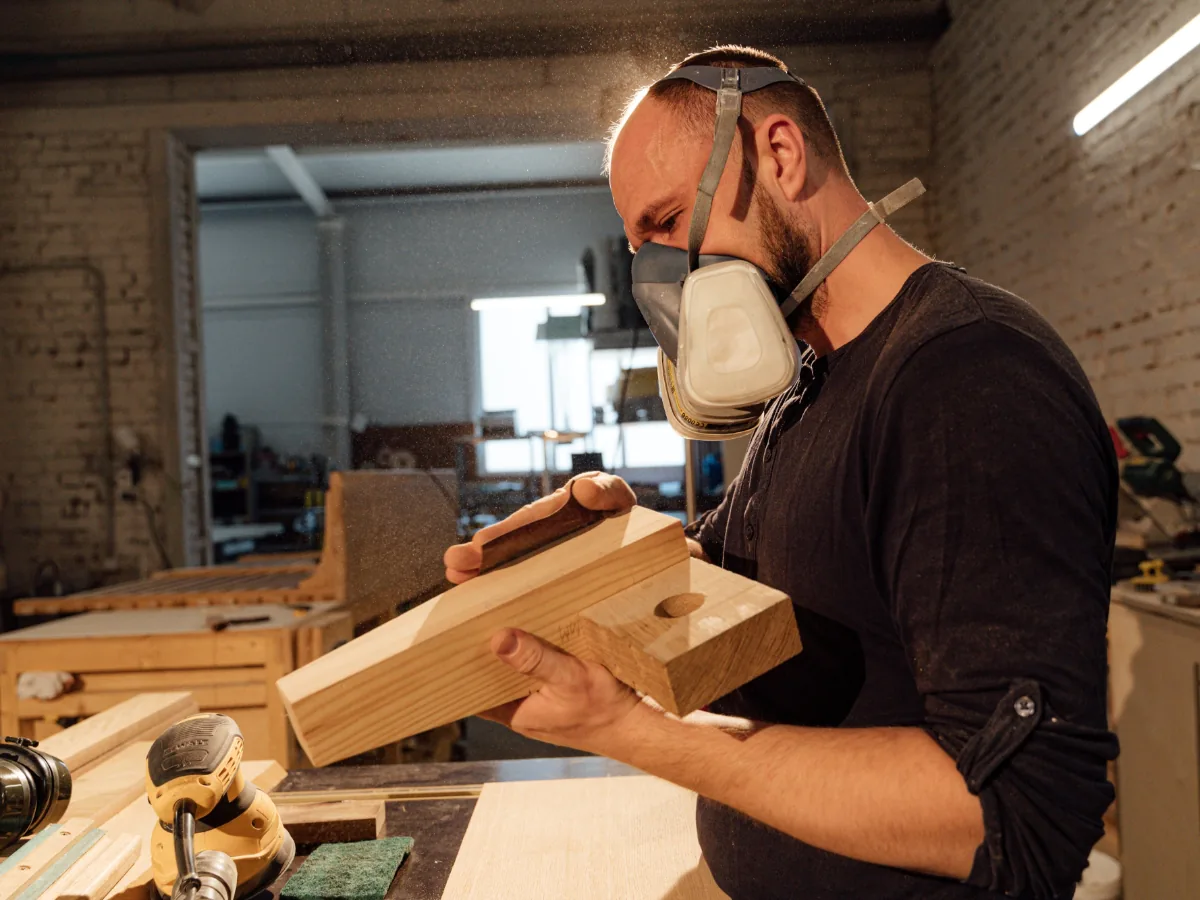Woodworking is an exciting journey that allows you to create beautiful pieces while honing your skills and creativity. However, as a beginner, it’s natural to feel a bit overwhelmed by the tools and techniques involved. Safety should always be your top priority in the workshop, as even minor oversights can lead to serious accidents. In this blog post, we’ll share the top 10 woodworking safety tips designed specifically for beginners. By incorporating these essential practices, you can build your confidence, protect yourself, and fully enjoy the rewarding experience of woodworking. Let’s dive in and make your workshop a safer place!
15 Essential Woodworking Skills
1. Always Wear Personal Protective Equipment (PPE)
When it comes to woodworking, safety should always be your top priority. One of the most effective ways to ensure your safety is by wearing Personal Protective Equipment (PPE). This not only helps protect you from potential hazards but also promotes a safer working environment. Let’s explore the different types of PPE commonly used in woodworking, their importance, and tips for selecting the right gear.
Safety Goggles: Protect Your Eyes
Importance of Safety Goggles
Woodworking can involve flying debris, splinters, and dust that can easily irritate or harm your eyes. Safety goggles provide a protective barrier against these hazards, ensuring your vision remains clear and intact.
Tips for Choosing Safety Goggles
- Anti-Fog Coating: Look for goggles with an anti-fog feature to maintain visibility. For example, the 3M Virtua Safety Glasses come with anti-fog lenses, making them ideal for woodworking tasks.
- Comfort and Fit: Ensure the goggles fit snugly without being too tight. Adjustable straps can help achieve a comfortable fit. Consider the Uvex Stealth OTG Safety Goggles, which are designed to fit over prescription glasses.
- Impact Resistance: Choose goggles that meet ANSI Z87.1 standards for impact resistance. Brands like Honeywell produce reliable options that offer both protection and comfort.
Ear Protection: Safeguard Your Hearing
Importance of Ear Protection
Loud tools, such as table saws and routers, can produce noise levels exceeding 85 decibels, which can lead to hearing loss over time. Wearing ear protection is essential for long-term health.
Tips for Selecting Ear Protection
- Types of Ear Protection: Consider earplugs or earmuffs based on your comfort level. For instance, the 3M Peltor X5A Earmuffs are highly effective, reducing noise levels while allowing you to remain aware of your surroundings.
- Noise Reduction Rating (NRR): Look for products with a high NRR. The Howard Leight by Honeywell Laser Lite Earplugs offer an NRR of 32 dB, making them suitable for heavy-duty use.
- Comfort: Since you’ll likely wear ear protection for extended periods, choose models with soft cushioning, such as the Mpow 035 Noise Cancelling Earmuffs, which are lightweight and comfortable.
Dust Masks: Breathe Easy
Importance of Dust Masks
Fine wood dust can be harmful to your respiratory system, causing irritation and long-term health issues. Dust masks provide a barrier against inhaling particles and harmful substances.
Tips for Choosing Dust Masks
- Filtering Efficiency: Opt for masks with a high filtering efficiency, such as N95-rated masks. The 3M 8511 Respirator is an excellent choice as it filters at least 95% of airborne particles and features an exhalation valve for easier breathing.
- Comfort and Fit: A proper fit reduces the risk of dust entering around the edges. Masks like the Honeywell N95 Respirator are designed to contour to the face, providing a secure fit without feeling claustrophobic.
- Reusable vs. Disposable: Decide whether you prefer reusable or disposable options. For example, the GVS SPR457 Elipse P100 Respirator is a reusable model that provides high levels of protection and comfort.
Additional Tips for Selecting the Right PPE
- Check for Certifications: Ensure all PPE meets safety certifications relevant to your region, such as ANSI or OSHA.
- Layering for Protection: Consider wearing multiple layers of PPE. For instance, combine safety goggles with a dust mask and ear protection for comprehensive safety.
- Test Before Use: Always try on your PPE before starting a project. Adjust straps and fittings to ensure maximum comfort and protection.
Quick Reference: PPE Comparison Table
| PPE Type | Recommended Product | Key Features | Price Range |
|---|---|---|---|
| Safety Goggles | 3M Virtua Safety Glasses | Anti-fog, comfortable fit, impact resistant | $10 – $15 |
| Ear Protection | 3M Peltor X5A Earmuffs | High NRR, soft cushioning | $25 – $30 |
| Dust Mask | 3M 8511 Respirator | N95 rated, exhalation valve, comfortable fit | $15 – $20 (10-pack) |
| Reusable Respirator | GVS SPR457 Elipse P100 Respirator | High protection, comfortable design | $30 – $40 |
By prioritizing personal protective equipment in your woodworking projects, you’re not just complying with safety standards; you’re demonstrating a commitment to your own well-being and long-term health. Investing in quality PPE can make all the difference in creating a safe and productive workspace.
Keep the Workspace Organized and Clean
A cluttered workspace not only hampers productivity but can also lead to accidents and injuries. Maintaining an organized workshop is crucial for safety and efficiency. In this section, we’ll explore effective strategies for keeping your workspace tidy, including storage solutions, cleaning routines, and methods to minimize tripping hazards.
The Importance of an Organized Workspace
An organized workspace offers numerous benefits, including:
- Increased Productivity: An orderly environment minimizes distractions, allowing you to focus better on your tasks.
- Enhanced Safety: Reducing clutter decreases the risk of accidents, such as slips, trips, and falls.
- Improved Morale: A clean and organized workspace can boost your motivation and overall job satisfaction.
Practical Storage Solutions
Investing in appropriate storage solutions is key to an organized workspace. Here are some effective products to consider:
- Tool Chest: A tool chest, like the Husky 52 in. Mobile Workbench, provides ample storage space for your tools. With various drawers and cabinets, it helps keep your tools organized and easily accessible.
- Shelving Units: Use heavy-duty shelving units such as the Rubbermaid Commercial Products Heavy-Duty Shelving Unit. With adjustable shelves, it can accommodate different sizes of materials and tools, ensuring everything has a designated space.
- Clear Storage Bins: Transparent bins, like the IRIS USA 9 Quart Stackable Storage Bin, are excellent for storing smaller items. Label each bin to quickly identify contents, helping you find what you need without unnecessary rummaging.
- Pegboards: Installing a pegboard, such as the Wall Control Metal Pegboard, allows for vertical storage of tools. Tools can be hung in plain sight, making them easy to reach and return after use.
Implementing a Regular Cleaning Schedule
To maintain cleanliness, establish a regular cleaning routine. Here are some tips to create an effective schedule:
- Daily Tidying: Spend 5-10 minutes at the end of each day organizing tools, cleaning surfaces, and disposing of waste. This small investment of time can prevent clutter from accumulating.
- Weekly Deep Clean: Dedicate one day a week for a more thorough clean. This includes sweeping or vacuuming the floor, dusting surfaces, and wiping down equipment. A product like the Shark Navigator Lift-Away Vacuum is perfect for cleaning workshop floors and hard-to-reach areas.
- Monthly Inventory Check: Once a month, take stock of your supplies and tools. This allows you to identify what needs replenishing, ensuring that everything is in good condition and ready for use.
Minimizing Tripping Hazards
Reducing tripping hazards is essential for a safe workspace. Here are several strategies:
- Cable Management: Use cable clips, such as the Joto Cable Management Sleeve, to organize cords and prevent them from becoming a tripping hazard. This not only improves safety but also enhances the overall aesthetics of your workspace.
- Non-Slip Mats: Place non-slip mats, like the Rubber-Cal Elephant Bark Anti-Fatigue Mat, in high-traffic areas to reduce the risk of slips and falls.
- Keep Walkways Clear: Ensure that pathways are free from any obstructions. Regularly check that tools, boxes, or materials are not left lying around.
- Properly Store Materials: Always return materials to their designated storage area after use. For instance, if you’re working with lumber, utilize racks such as the Triton TPT1500 Workcentre to store planks securely and vertically.
Stay Safe and Craft Smart
In conclusion, prioritizing safety is essential for every beginner in woodworking. By adhering to these top 10 woodworking safety tips, you can create a secure and enjoyable workshop environment. Remember to continuously review and update your safety practices to stay informed and protect yourself as you embark on your woodworking journey. Happy crafting!

Hi, I’m Ethan Oakley, a lifelong woodworking enthusiast and the founder of PureWoodArt.com. My journey into woodworking began in my grandfather’s workshop, where I spent countless hours learning the craft and developing a deep appreciation for the beauty and versatility of wood. Over the years, I’ve honed my skills and expanded my knowledge, from traditional joinery techniques to modern woodworking tools and methods. Let’s craft something amazing together!

Could you recommend some beginner-friendly woodworking books or online courses? I feel like having some extra resources would really help me understand the safety practices better! 📚
Absolutely! I recommend ‘The Complete Manual of Woodworking’ by Albert Jackson. It’s a great all-around book, and for online courses, check out the ones on Udemy. They have some great beginner safety courses too! Happy woodworking! 🎉
Thanks for your question! For projects involving sanding, a face shield is definitely a good idea to protect against fine dust. I recommend looking into 3M’s respirators for breathing protection and a full-face shield for extra safety. Stay safe! 😊
I’ve been using the DeWalt DWE7485 Table Saw for a while, and it has great safety features like a blade guard and anti-kickback pawls. Definitely recommend it for beginners! What do you think about this saw? 🤷♂️
Hey, great tips! Can you expand more on what kind of PPE you recommend for different types of woodworking projects? Like, do we really need face shields for sanding? 🤔
I totally agree with keeping your workspace organized! I recently built my first coffee table, and I found that a clean space made everything go so much smoother. A cluttered bench can really throw you off! ☕️🛠️
Also, for those new to woodworking, consider using push sticks when working with table saws. They’re super handy for keeping your fingers away from the blade! You can make your own or buy them like the WoodRiver Safety Push Stick. 🛡️
Great suggestion! Push sticks are essential for safe cuts. They help maintain control and keep fingers away from the blade. Thanks for sharing that tip! 👍
One tip I always share is to double-check your tools before each use. I had a close call once when my circular saw’s guard was stuck. A quick check can save you a lot of hassle and danger! 🔧